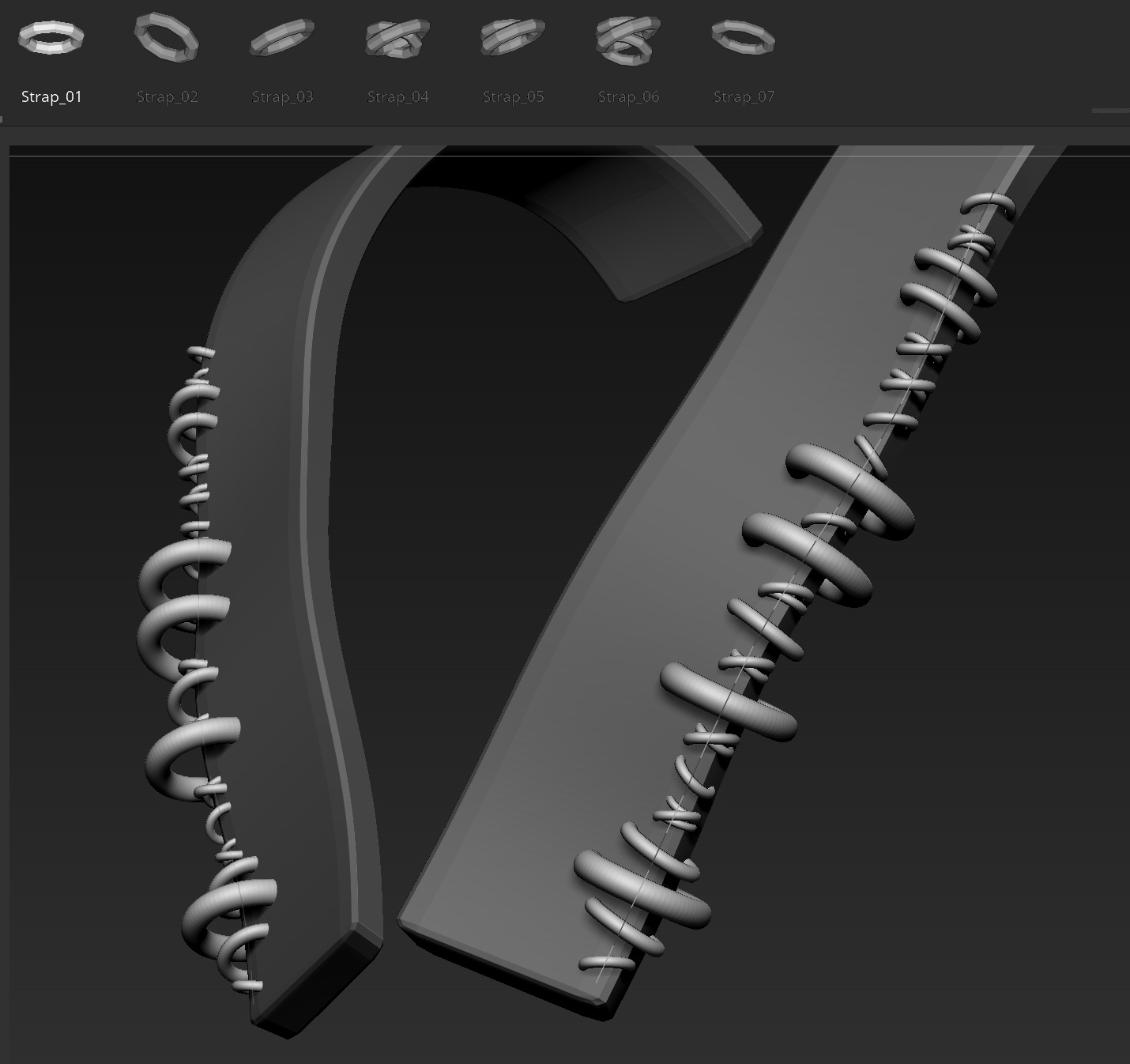Hi @gabo1991 !
I can’t speak for @Kloies, but I replicated this behavior by simply duplicating the same primitve subtool several times, making slight transformation to each with gizmo, so the initial scale should be consistent. To make doubly sure, I actually merged the subtools then re-split them to ensure they were similar in the world space. For the record, the prescribed remedy of unifying/repeat to other has no effect on this issue.
-
The IMM+ Curve + Variations tool works more or less correctly if the tool is oriented flat/ parallel to the screen plane/surface at the time of IMM creation. To clarify, the exact same tool/set of subtools will work well when oriented in one position at IMM creation, and poorly when oriented in another.
-
The IMM+Curve brush works as expected when created in an upright, perpendicular to surface fashion, as @Kloies has done here, IF variations are NOT enabled. In other words, repeating the same ring over and over.
-
It all starts to fall apart when the IMM + Curve+ Variations tool is created in an upright/perpendicular position, and variations are enabled–but not always. Sometimes it works as expected.
-
The IMM + Curve + Variations brush works as expected if the differences between the meshes are minimal. For instance, duplicating a subtool and leaving the position mostly the same, but perhaps removing some sections of geometry so you can tell when the tool is varying successfully. I currently suspect it is the degree to which the individual meshes vary causing the issue.
I tested several ideas.
-
That the perpendicular positioning on a circular ring caused minimal surface contact, and zbrush had trouble figuring out the proper averaged scale/position along the normals. I created an inverted pyramid to make single point contact with the surface, varied it, and it proved to be my most successful tool 
-
Both times Ive seen this issue reported, the users were using ring shapes. I thought it might have something to do with the negative space in the tool. I created a series of different primitive shapes with negative spaces, and indeed they all performed poorly. I created a solid rectangular cube shape, and it seemed to be much more resistant to problems. So far, so good.
-
To put this to the test, I really tried to break my cubic tool by varying the meshes to more extreme degrees. I did, in fact, successfully break it, and it exhibited the same behavior on display here.
My current wild guess is that there is some sort of internal bounding box/boundary issue going on, where if a variation mesh is offset/rotated/deformed by a significant enough degree, it forces Zbrush to scale it down in order to fit? This wouldn’t be an issue when the mesh is oriented flat at IMM creation, because the boundaries dont intrude on each other much in that situation. They pretty much fit end to end. However, when stacked on top of each other, as is happening when oriented perpendicular to the surface along the curve, there may be much less tolerance for variation.
I could find no control to address this however, and spacing out the steps in the curve menu did not fix the issue, so I’m probably way off.
To @Kloies
I’m sure this is frustrating. Rather than listen to me make wild, uniformed guesses you would probably like to get on with your work. For the time being I would recommend trying to set up your tool as a Tri Part IM brush on a curve. Most of the IM+Curve brushes in zbrush are Tri part tools. They work reliably, though it may take some more creativity to work within its limitations.

